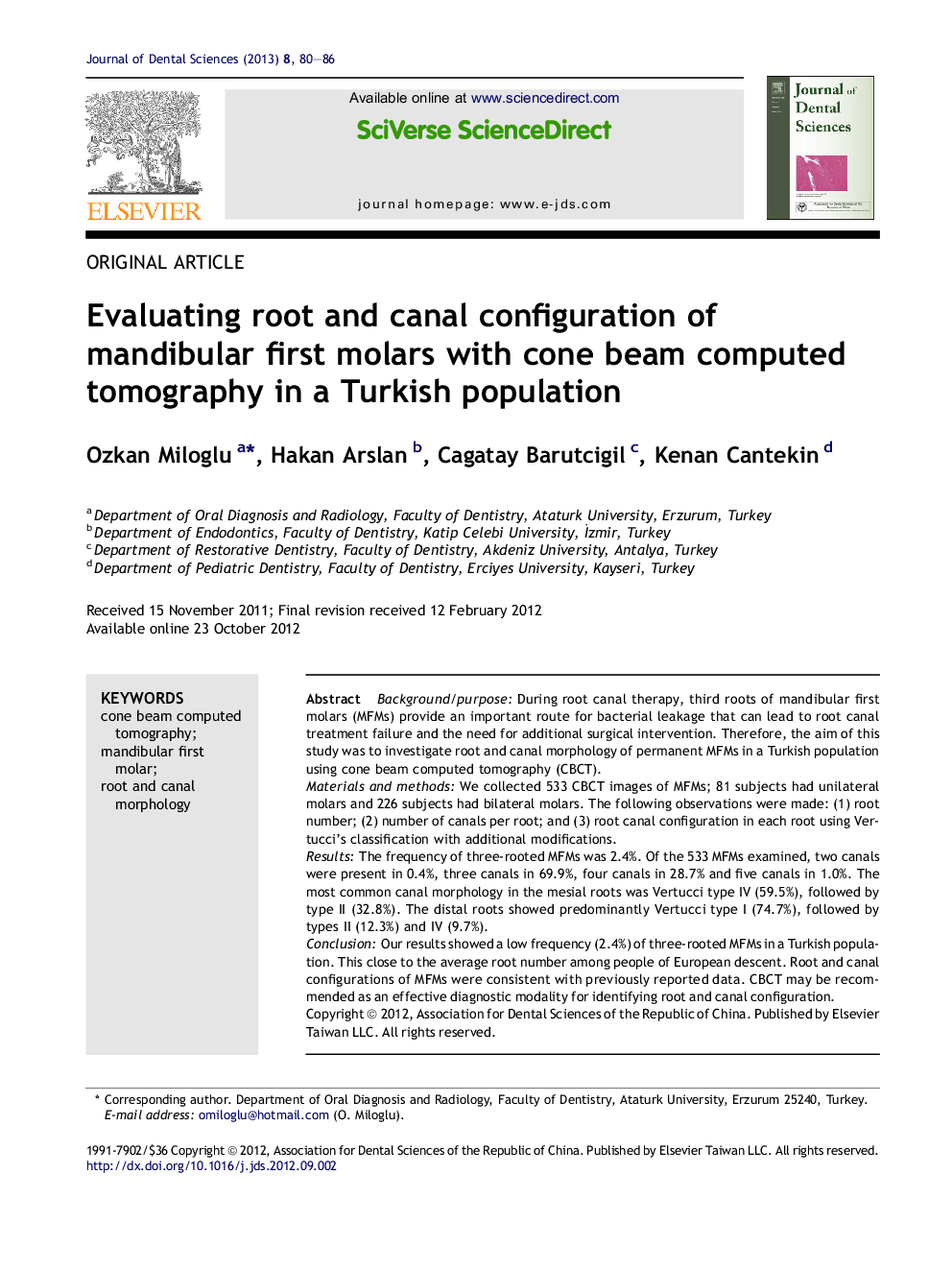| Article ID | Journal | Published Year | Pages | File Type |
|---|---|---|---|---|
| 3145645 | Journal of Dental Sciences | 2013 | 7 Pages |
Background/purposeDuring root canal therapy, third roots of mandibular first molars (MFMs) provide an important route for bacterial leakage that can lead to root canal treatment failure and the need for additional surgical intervention. Therefore, the aim of this study was to investigate root and canal morphology of permanent MFMs in a Turkish population using cone beam computed tomography (CBCT).Materials and methodsWe collected 533 CBCT images of MFMs; 81 subjects had unilateral molars and 226 subjects had bilateral molars. The following observations were made: (1) root number; (2) number of canals per root; and (3) root canal configuration in each root using Vertucci's classification with additional modifications.ResultsThe frequency of three-rooted MFMs was 2.4%. Of the 533 MFMs examined, two canals were present in 0.4%, three canals in 69.9%, four canals in 28.7% and five canals in 1.0%. The most common canal morphology in the mesial roots was Vertucci type IV (59.5%), followed by type II (32.8%). The distal roots showed predominantly Vertucci type I (74.7%), followed by types II (12.3%) and IV (9.7%).ConclusionOur results showed a low frequency (2.4%) of three-rooted MFMs in a Turkish population. This close to the average root number among people of European descent. Root and canal configurations of MFMs were consistent with previously reported data. CBCT may be recommended as an effective diagnostic modality for identifying root and canal configuration.
